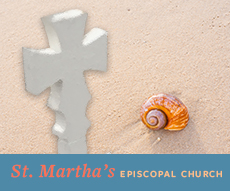
30 Dec The Downward Path
In the final devotion from the Advent booklet “And the Word was God”, featuring the reflections of the spiritual writer Henri Nouwen, there is this important insight:
“The disciple is the one who follows Jesus on his downward path and thus enters with him into new life.”
The key word in this challenging sentence is the word “downward”. Why downward? After all, the call to follow Jesus on his “downward path” is not one you hear too often, at least not from the pulpit – clergy, as much as anyone, want you to leave the church in an upbeat mood. When we think of God and his call to us, we are used to thinking of a God who will raise us up and inspire us to higher things. However, if Jesus calls us to follow him down as well as up, it is with good reason. The disciples and saints came to know and understand Jesus in this way, but it is a way requiring both faith and courage.
At Christmas we celebrate God’s coming down from heaven and being born of Mary. This is called the incarnation, when God became a flesh and blood person, and took on human nature, while at the same time retaining the fullness of his divinity. He is given the name of Jesus – the one who saves – and is recognizably human like you or me. The surroundings of his birth may have been humble, but what really matters is that he is loved as soon as he is born. In the household of Mary and Joseph he will be loved and grow into mature adulthood.
His divinity manifests itself in both expected and unexpected ways. What is unusual is that Jesus does not strain after wealth or worldly status, or attempt to show the retributive power of God. Instead, he is an itinerant teacher who heals and raises the dead. St Paul described Jesus as one who, “emptied himself, taking the form of a slave.” (Philippians 2:7) Jesus as man identifies with the lowly, the outcasts, lepers, the poor and the prisoners. Jesus has come down to the lowest social level of human life.
It may explain why so many abandoned him after his arrest. If he were God, surely he would set himself free. I think his arrest and being roughed up by the Romans created doubts in the minds of many believers. If so, they hadn’t been listening carefully, for he had already warned them that he would choose the way which would lead to death. Jesus was following the will of the Father in following the downward path to the cross.
After death, Jesus goes further downwards, into Hades itself, to rescue the souls held captive there since the beginning of time. This is the Harrowing of Hell, which is how theologians answered the question of where Jesus was between death and resurrection. There are Orthodox icons which depict this scene, showing Jesus extending a hand to Adam and Eve while a crowd of souls wait patiently behind them. Jesus opens the gates of hell before he opens the gates of heaven.
If Hell’s wall are breached, it is because God’s light penetrates all creation, even Hell. This light never shone brighter than it did at the resurrection, which we celebrate at Easter: from the depths of death Jesus rises to new life.
The story of Jesus’ birth, life, death and resurrection is told each year through the liturgy, which is the form and expression of our worship. It guides us as we journey alongside Jesus, allowing us to enter more deeply into the experience of Jesus’ life and thought. This matters particularly during Holy Week, when the story of Jesus’ Passion is told. I know Christians who avoid it – especially Good Friday – because it makes them feel sad. But that is the whole point. The liturgy follows the story and takes you on a journey which is harrowing, distressing and intense. It is an invitation to follow Jesus down and taste, in a small way, the bitterness of his betrayal, arrest, trial and execution.
At Christmas this all seems a long way off. “For everything there is a season, and a time for every matter under heaven.” (Ecclesiastes 3:1) Throughout Advent we have been waiting to celebrate the birth of Jesus, while at the same time remembering his return at the end of time to judge the world. Birth and judgement seem unlikely partners, but they are bound together during Advent and in our prayer and our waiting we can perhaps unravel the mystery of their conjunction.
But for now, let us travel down to Bethlehem to see the miracle there – God made man, earth come to heaven, salvation through our Lord Jesus Christ – God’s most amazing gift to the world.
Have a blessed and peaceful Christmas
Father David




No Comments